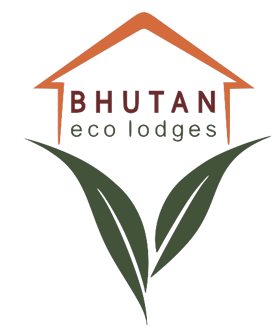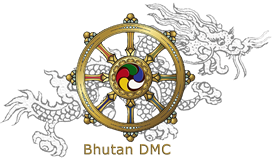Bhutan – Haa valley Trek (Saga La Trek)
A gentle trek that passes through charming Haa villages and the dense alpine forest and meadows amidst magnificent Himalaya view
Duration: 1 night 2 days camping trek & 7 nights 8 days cultural tour with hotel stay
Recommended Seasons: The best months for this trek are March to May and September to November.
Trek Grade: Moderate
This is a gentle trek passing through villages in the Haa valley and the dense forest in the Paro side, involving ascent through forest and meadows. Also known as ‘Saga La Trek’, it follows the traditional route taken by Haa farmers on their annual trip to plant rice in the Paro valley. In return of their effort, Haa farmers used to get part of red rice crop in earlier days, as rice doesn’t grow in Haa. Trek is coupled with a visit to the historical and cultural visit to Thimphu, Paro, Punakha and an interesting walk to the legendry Tiger’s nest.
.jpg)
Itinerary for Haa valley Trek (Saga La Trek)
Day 1: Arrive Paro (Bhutan) by Flight & transfer to Thimphu (55km, approx. 1.1/2-hour drive)
The flight to Paro is one of the most spectacular in entire Himalayas. Flying along the Himalayan range from Kathmandu or over Himalayan foothills if flying from Kolkatta, the journey offers fascinating views and an exciting descent into the Kingdom. Bhutan’s first gift to you as you disembark from the aircraft will be cool, clean fresh mountain air.
After immigration formalities and baggage collection you will be welcomed by our representative and embark on a picturesque drive to Thimphu, the capital town of Bhutan. The road leads through the Paro valley to the confluence of Paro and Thimphu rivers at Chuzom (confluence).
Shortly before reaching Chuzom, you will see on your left Tamchog Lhakhang, the temple built by Thangtong Gyalpo, a pioneering engineer who introduced the construction of suspension bridges into Bhutan and Tibet (several of which are still in use today). The present bridge to Tamchog Lhakhang was restored in 2005 in the design of a traditional style with iron chains and crossing this iron bridge is a wonderful experience.
On arrival, in Thimphu check-into the hotel. The capital town of Bhutan and the centre of government, religion and commerce, Thimphu is a unique city with unusual mixture of modern development alongside ancient traditions. It is perhaps still the world’s only capital city without a traffic light.
Later in afternoon walk around National Memorial Chorten, a large white structure crowned with a golden spire. It is located close to the center of Thimphu city and is one of its most iconic monuments. This is the most ideal spot to interact with locals who throng in large numbers to circumambulate the chorten, whirl the large red prayer wheels and pray at a small shrine inside the gate. The paintings and statues inside the monument provide a deep insight into Buddhist philosophy.
Afterwards an exploratory walk around Thimphu main street and market area.
Overnight at the hotel in Thimphu (Altitude 2,320m).
Day 2: Thimphu
Morning after breakfast, drive to see the iconic gigantic Buddha Dordenma (Vajra seated), the world’s largest sitting bronze statue. Majestically situated at Kuenselphodrang, it is an object of great veneration to all sentient beings. The land at Kuenselphodrang measuring 145 acres was gifted to Monks Body by His Majesty the Fourth King of Bhutan. The Park conserves 798.4 acres of forest area that surrounds the Buddha Dordenma statue. Dedicating it to the 60th birth anniversary celebration of His Majesty the Fourth Druk Gyalpo, His Holiness the Je Khenpo consecrated the 201 feet tall Buddha Dordenma statue at the Kuenselphodrang on 24th September 2015.
After this insightful visit drive to Textile Museum, established in 2001 under the royal patronage of Her Majesty Gyalyum Sangay Choden Wangchuck. The museum is managed by the Department of Culture, Ministry of Home & Cultural Affairs, Royal Government of Bhutan. Exhibitions here introduce the major weaving techniques, styles of local dress and textiles made by women and men.
Institute for Zorig Chusum, commonly known as Arts & Crafts School or Painting School is an important learning center that offers a six-year course on the 13 traditional arts and crafts of Bhutan. On a visit, one can see students learning the various skills taught at the school.
Located below the main town, Centenary Farmers Market popularly known as Weekend market is a pleasant, colourful & delightful place to mingle with locals. Farmers come from all over the country to sell their farm products in this market. Also available here are the handicrafts and artifacts, to purchase.
Then visit Changangkha Lhakhang, one of the ancient temples in Thimphu established on a site chosen by Phajo Drukgom Shigpo, the founder of Drukpa lineage in Bhutan. The central statue here is Chenrezig in a manifestation with 11 heads. From temple courtyard, there is fascinating view of Thimphu valley.
Conclude the sightseeing of the day with visit of Trashichhoedzong that has been the seat of the government since 1952 and presently houses the throne room and offices of His Majesty the King, the Secretariat and the Ministries of Home affairs and Finance. The dzong is located close to Thimphu town, next to the banks of the Wang Chhu River. It is an impressively large structure, surrounded by well-kept lawns and beautiful gardens.
Evening free to explore the government-run Handicrafts Emporium and local crafts Bazaar, to browse through example of Bhutan's fine traditional arts constituting hand-woven textiles, thangkha paintings, masks, ceramics, slate and wood carvings, jewellery, interesting items made from local materials.
Overnight at the hotel in Thimphu (Altitude 2,320m).
.jpg)
Day 3: Thimphu – Dochu La - Punakha (75km, approx. 3-hour drive)
After breakfast drive to Punakha across Dochu-la pass (3,088m/ 10,130 ft) stopping here to take in the view and admire the chorten, mani wall, and prayer flags which decorate the highest point on the road. If skies are clear, the following peaks can be seen from this pass (left to right): Masagang (7,158m), Tsendagang (6,960m), Terigang (7,060m), Jejegangphugang (7,158 m), Kangphugang (7,170 m), Zongphugang (7, 060 m), a table mountain that dominates the isolated region of Lunana - finally Gangkar puensum, the highest peak in Bhutan at 7,570m.
Afternoon visit Punakha Dzong. Also known as ‘The Palace of Great Bliss’, Punakha Dzong was built strategically at the junction of Pho Chhu and Mo Chhu rivers in 1637 by Zhabdrung Ngawang Namgyal to serve as the religious and administrative centre of the region. The Dzong has played an important role in Bhutan’s history and on 17 December 1907, the first King of Bhutan Gongsar Ugyen Wangchuk, was crowned here. Damaged by six catastrophic fires, an earthquake and once by flood, the Dzong has been fully restored by the fourth King. Dzongchung (or the little Dzong), built in 1328 by saint Ngagi Rinchen can still be seen opposite the main Dzong.
Thereafter a short walking excursion to Chimi Lhakhang:
The Chimi Lhakhang (temple), situated on a round hillock in the centre of Punakha valley near Lobesa, was built in 1499 by the 14th Drukpa hierarch, Ngawang Choegyel, after the site was blessed by the maverick saint Drukpa Kuenley who in the late 15th century used humour, songs and outrageous behaviour to dramatise his teachings and owing to this also known as ‘Divine Madman’. The Lhakhang is situated about 10 km from centre of Punakha town near Sopsokha village, from where a 20-minute walk through fields of mustards and rice, leads to a hillock that is the site of temple. Prayer flags are lined all along the road from the tiny village hamlet known as Yowakha, along a stream to the monastery. All houses in the village are decorated with paintings of phalluses on their exterior walls. The lama Kuenley had called the hillock where the monastery exists as the breast of a woman because of its round shape.
Overnight at the hotel in Punakha (Altitude 1,300m)
Day 4: Punakha – Haa Valley (175km, approx. 6-hour drive)
After breakfast, proceed to Haa valley. Blessed with incredible natural beauty, Haa valley is the smallest district in the country and also the second least populated district in the country. It is one of the most exotic valleys in the country, opened for foreign tourists only in 2002.
On the way, visit Simtokha Dzong, one of the oldest fortresses of the country, built in 1629. Legend associated with dzong’s construction mention that the fortress was built to subdue a demon that was harassing travellers to this region. The most noteworthy artistic feature of this dzong is the series of over 300 finely worked slate carvings behind the prayer wheels in the courtyard.
Progressing further take a short photo stop at Chuzom, the confluence of Paro & Thimphu rivers.
On arrival in late afternoon check into the hotel. Evening take a stroll in majestic Haa valley, a steep north-south valley with a narrow floor. Also known as ‘Hidden-Land Rice Valley’, it is one of the most beautiful and isolated areas in Bhutan, adorned with pristine alpine forests and majestic mountain peaks. Alongside Buddhist practices, the people of Haa practice shamanistic traditions also. The most significant of the shamanistic traditions is the annual ceremony to honour the guardian deity of the valley – Ap Chhundu. The people of Haa also celebrate their new year – known as Lomba – much earlier than people in other parts of country. Haa is also home to a number of nomadic herders and hosts an annual ‘Haa summer festival’ which is a lively celebration of the mix of traditional living-culture, nomadic lifestyles, unique Bhutanese cuisines, traditional sports and religious performances. It provides insight into the lives and traditions of Bhutan’s nomadic herders.
Overnight at the hotel in Haa valley (Altitude 2,670m).
.jpg)
Day 5: Haa Valley
Morning after breakfast, proceed on approx. 4-hour walking trip from Lechuna Village to Jamte Goenpa. Begin your walk through the lower village of Lechuna and continue on down to the Haa Chhu (river) before crossing a quaint wooden bridge. From here the walk to Jamte goenpa is gradual ascent taking about 1.5 hour through pristine forest which later opens up to the village. Visit the monastery which is more than 300 years old followed by visit to a village house. The view of southern Haa valley can be enjoyed best from here. Then we take a seldom used animal track that connects on to the main trail after an hour’s walk. Continue onto Chumpa bridge to stop for picnic lunch beside the river. After lunch, we walk slowly through the beautiful Chuma village taking time to see the villagers at work and even have some interaction with them. Walking along the village path, we reach to motorable road and drive on to our lodge.
Later in the afternoon visit famous temple of Lhakhang Karpo.Also known as ‘White temple’, Lhakhang Karpo was established in 7th century by Tibetan King Songtsen Gempo in his mission to built 108 monasteries in one day. According to legend, a white and black pigeon were released to select the site for temples and the white pigeon landed on the foothills of the three towering mountains worshipped as Rigsum Gonpo and is where Lhakhang Karpo stands today.
Then visit Lhakhang Nagpo. Situated towards north of Lhakhang Karpo and located in Dumchoe village, Lhakhang Nagpo also known as Black temple was established in the 7th century by Tibetan King songtsen Gampo. Lhakhang Nagao & Lhakhang Karpo stands as guardian sentinels keeping watch at the south entrance of the valley.
Evening at leisure in Haa town.
Overnight at the hotel in Haa valley (Altitude 2,670m)
Day 6: Haa Valley – Saga la – Dongney Tsho, Distance: 13km, approx. 5 / 6-hour walk, Altitude: 3,200m
Morning after breakfast, embark on a steep climb to Yangthong Goempa, set on a hilltop and it’s the starting point of the trek. This big temple surrounded by a few houses is believed to be 300 years old and is dedicated to Guru Rinpoche and his eight manifestations. From here it is more or less a level trail through pine forest which brings one back to the main trail to the valley below Saga La (La – Pass). Here the Makhang River flows through the region called Talung, consisting of three beautiful villages known as Tsenka Gom, Tsenka Wom and Langlo. The track winds along the farmland that is fenced with cobblestone walls to protect the farmland from wild animals. Later climb to a wooden bridge, Chagdo Zam, cross more meadows and some forests until reaching a rock with twin eyes and a distorted mouth.
It is believed that a Tibetan saint known as Thangtong Gyalpo, in the 14th century subdued the Nyela Demon and turned it into this rock. Ever since, the travellers using this trail have walked across without any fear of the Demon. This holy rock is located in the Khadey Gom meadow.
Later in the day, take a gradual hike through meadows and coniferous forest followed by ascent to the Saga La Pass 12,200 feet. It is customary to take a gift for the pass, so either pick a rock or break off a twig/flower to pile it on the mini stupa built by thousands of former travellers. Once reach the top of the pass, shout ‘Lhagyelo’ (God be victorious) and one will be blessed. During a good weather there is spectacular view from both sides of the Pass.The view towards Paro (east) includes Mount Jhomolhari (23,993 feet), Mount Chaterake (18,270 feet) and below in the valley the Drukgyal Dzong and the sacred Tiger's Nest Monastery. Looking to the west the peaks of Haa forming the borders with Tibet can be seen. From the Pass it is good two hours downhill walk-through mixed conifers and rhododendrons and the camp is set at an open meadow at Dongney Tsho, surrounded with tall firs. To the left is the black Choshola mountain, a holy place from which a lake escaped.
Overnight camp at Dongney Tsho (Altitude 3,200m)
Day 7: Dongney Tsho – Drukgyel Dzong, Paro
After breakfast, commence downhill walk for about 1.5 hours until at Genchu Zam (Bridge). The walk is through thick vegetation with chances of encountering laughing thrushes, magpies, nutcrackers and pheasants. One will cross a beautiful village comprised of about eight households and a temple at the left side of the trail known as Chodeyphu, set picturesquely at the base of Mount Lamp Baja (Foggy Mountain, inhabited by mountain goats). Another one-hour walk will bring one to Balkan Chu where the ancient Haa Planters' Trail ends. From the road head picked by vehicle and shuttle to the hotel.
Afternoon visit Ta Dzong, originally built as Watchtower, which now houses National Museum. This seven-storied watch tower fortress or Ta Dzong was built in 1649 and during 1968 converted into National Museum of the country. The extensive collection includes antique thangkha paintings, textiles, weapons & armour, household objects and a rich assortment of natural and historic artifacts.
After the visit, walk down the trail to explore 17th century Rinpung Dzong, meaning (‘Fortress of the heap of jewels’), which has a long and fascinating history. The Dzong ranks as a high point of Bhutanese architecture. Its massive, buttressed walls that tower over the town are visible through the valley. Inside Rinpung Dzong are 14 shrines and chapels including Sandalwood Stupa, Protector’s shrine, Temple of the Guru’s eight manifestations, Chapel of the head lama, Chapel of the eleven-faced Avalokiteshvara, Temple of the Treasure Revealer, Temple of the Bursar.
Overnight at the hotel in Paro (Altitude 2,280m).
.jpg)
Day 8: Paro
After breakfast, the morning is reserved to visit Taktsang Monastery (approx. 5-hour round trip walk), one of the fabulous locations in the known world. The Taktsang Monastery is the most famous of Bhutan’s monasteries, perched on the side of a cliff 900m above the Paro valley floor. It is said that Guru Rinpoche arrived here on the back of a tigress and meditated at this monastery and hence it is called ‘Tiger’s Nest’. This site has been recognized as a most sacred place and visited by Zhabdrung Ngawang Namgyal in 1646 and now visited by all Bhutanese at least once in their lifetime. On 19 April 1998, a massive fire had severely damaged the main structure of building but later this Bhutanese jewel got restored to its original splendour.
Afternoon drive to the base of Drukgyel Dzong, a ruined fortress where Bhutanese warriors fought Tibetan invaders centuries ago. The snowy dome of sacred Chomolhari, ‘mountain of goddess' can be seen in all her glory from the approach road to the Dzong. Nearby visit a traditional farmhouse, which offers deep insight into lifestyle of village folks.
While returning to the hotel, en route visit the 7th century Kyichu Lhakhang, one of the 108 temples built in the Himalayas by Tibetan King, Songtsen Gampo. The building of this temple marks the introduction of Buddhism in Bhutan.
Overnight at the hotel in Paro. (Altitude 2,280m)
Day 9: Depart Paro
After breakfast, transfer to the airport for flight to onward destination. Our representative will help you with exit formalities and bid you farewell.
HOTELS IN THIMPHU
HOTELS IN PUNAKHA & WANGDUE
HOTELS IN GANGTEY
HOTELS IN TRONGSA
HOTELS IN BUMTHANG
HOTELS IN MONGAR
HOTELS IN TRASHIGANG
HOTELS IN SAMDRUP JONGKHAR
HOTELS IN PHUENTSHOLING
HOTELS IN HAA
HOTELS IN GELEPHU
HOTELS IN ZHEMGANG
RESTAURANTS IN PARO
RESTAURANTS IN THIMPHU
RESTAURANTS IN PUNAKHA
TOUR ITINERARIES
TREKKING ITINERARIES
SPECIAL INTERESTS TOURS
UNIQUE FESTIVALS & FAIRS
BLOG


